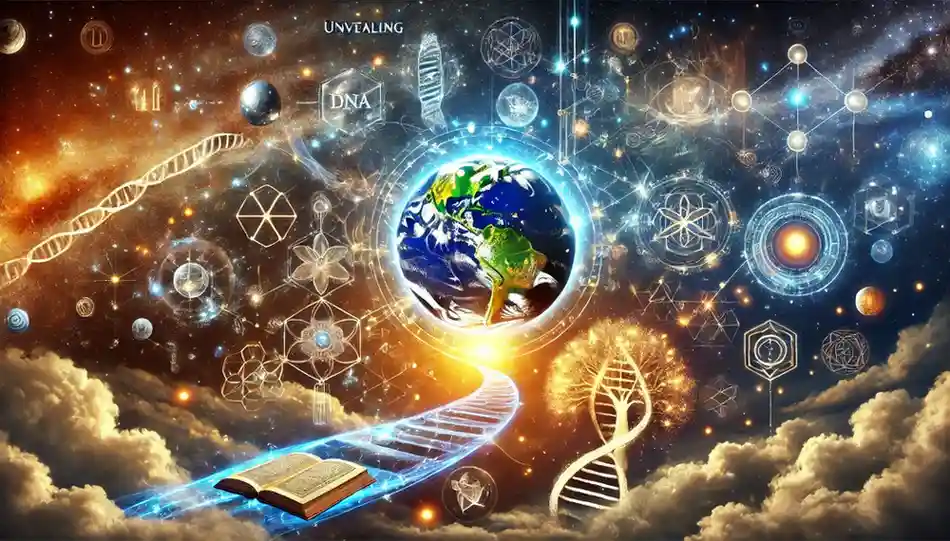Unveiling Mysteries: Exploring Humanity’s Most Intriguing Questions
Throughout history, humanity has grappled with countless mysteries that challenge our understanding of the world. From ancient architectural wonders to symbolic imagery in art and literature, these enigmatic topics continue to inspire curiosity and debate. Why do pyramids appear on the US dollar? How did early civilisations construct monumental structures without modern tools? What lies beneath the secrecy surrounding Antarctica?
This article delves into 17 thought-provoking questions spanning science, history, and culture. By exploring each topic, we aim to shed light on these mysteries and offer plausible explanations while acknowledging the allure of the unknown.
1. Why is the Egyptian pyramid depicted on the US dollar?
The pyramid on the US one-dollar bill is part of the Great Seal of the United States, which dates back to 1782. The pyramid symbolises strength and endurance, while its unfinished top represents ongoing growth and aspiration. The all-seeing eye above the pyramid is often linked to providence, overseeing the prosperity and success of the nation.
Conspiracy theories suggest Masonic or Illuminati influences, claiming the pyramid and the eye are symbols of secret societies. However, historians argue that the founding fathers used these symbols to represent the ideals of a young and thriving nation. The Latin phrases around the pyramid, Annuit Cœptis (“He approves of our undertakings”) and Novus Ordo Seclorum (“New order of the ages”), further support this interpretation of progress and destiny.
2. Why have 56 countries agreed to a treaty that prohibits them from entering Antarctica?
The Antarctic Treaty, signed in 1959, designates Antarctica as a zone dedicated to peace and scientific research. The treaty prevents military activities, mineral mining, and territorial claims. The 56 countries that signed it are committed to preserving the continent’s unique environment and promoting international cooperation.
However, speculations abound about hidden agendas. Some theorists argue that Antarctica could harbour ancient secrets, extraterrestrial bases, or untapped resources that governments want to control. Despite these claims, the treaty remains a groundbreaking example of international unity in protecting one of Earth’s last frontiers.
3. Why do airplanes never fly over Antarctica?
Airplanes rarely fly over Antarctica due to its harsh environment and lack of infrastructure. The extreme cold can affect aircraft systems, and the continent’s remoteness makes emergency landings nearly impossible. Additionally, magnetic anomalies in the region can disrupt navigational instruments.
While some conspiracy theories suggest that hidden secrets in Antarctica deter flights, practical challenges remain the main reason. Few airlines operate in the Southern Hemisphere, and direct routes over Antarctica are typically unnecessary for commercial travel.
4. How did NASA lose the recording of the moon landing when it was such a significant moment for humanity?
NASA admitted in 2006 that it had misplaced the original tapes of the 1969 moon landing. The tapes were likely reused to save costs, as was common practice at the time. However, NASA still has high-quality copies of the broadcast, which ensure the preservation of this historic event.
This loss has fuelled conspiracy theories, with sceptics claiming it supports their belief that the moon landing was staged. NASA, however, maintains that the landing was real, backed by extensive evidence, including physical moon samples and independent tracking data.
5. If Neil Armstrong was the first to step on the moon, who placed the camera there?
The camera that captured Neil Armstrong’s iconic descent onto the moon’s surface was mounted on the Lunar Module. Engineers designed it specifically to record this moment, ensuring that Armstrong’s first steps were preserved.
This question often arises from misunderstanding the mission’s logistics. The placement of the camera does not diminish the achievement but rather highlights the meticulous planning involved in the Apollo missions.
6. Why hasn’t humanity returned to the moon since then?
The last manned moon mission, Apollo 17, occurred in 1972. Budget constraints, shifting political priorities, and the high costs of lunar exploration led to the suspension of further missions. NASA redirected its focus to projects like the International Space Station and Mars exploration.
Recent interest in returning to the moon has grown, with missions like NASA’s Artemis program aiming to establish a sustainable presence. Challenges include technological upgrades, funding, and ensuring that missions align with current scientific goals.
7. If monkeys evolved into humans, why do monkeys still exist today?
Humans and modern monkeys share a common ancestor but evolved along different paths. Evolution does not imply that one species transforms entirely into another but rather that they adapt to their environments over time.
Monkeys and humans occupy distinct ecological niches. The survival of both species demonstrates the success of different evolutionary strategies. This question often arises from misunderstandings of evolutionary theory, which focuses on branching rather than linear progression.
8. How is 95% of DNA considered “junk,” and who decided it is truly unnecessary?
The term “junk DNA” refers to portions of the genome that do not code for proteins. Early researchers believed these segments were useless, but recent studies suggest they may regulate gene expression or perform other vital roles.
The phrase “junk DNA” is misleading, as ongoing research continues to uncover the significance of these regions. Scientists now prefer terms like “non-coding DNA” to describe these genetic elements.
9. How did people who lived in wooden huts and travelled by horse-drawn carriages build large and proportionate structures like churches and parliamentary buildings without advanced tools or lasers?
Ancient builders relied on ingenious engineering, mathematical precision, and human labour to create architectural marvels. Tools like pulleys, cranes, and chisels were advanced for their time. Skilled artisans and labourers worked in coordinated teams to execute intricate designs.
Structures like cathedrals and parliaments reflect centuries of accumulated knowledge, including geometry and material science. While modern tools like lasers simplify construction, historical achievements remain a testament to human ingenuity.
10. How do similar ancient architectural styles appear across the world?
Similarities in ancient architectural styles often result from shared human needs, like shelter, defence, and religious expression. Pyramidal structures, for example, appear in Egypt, Mesoamerica, and Asia due to their stability and ease of construction.
Cultural exchanges through trade or migration may have influenced these designs. While some theories suggest advanced lost civilisations or extraterrestrial intervention, most similarities can be attributed to convergent innovation driven by practical solutions.
11. Why are there depictions in ancient Egyptian art that resemble spacecraft?
Some interpretations of Egyptian art claim that carvings resembling spacecraft or advanced technology reflect ancient extraterrestrial encounters. However, most historians argue that these depictions are symbolic or misunderstood representations of religious and cultural ideas.
For example, the so-called “helicopter hieroglyphs” in the Temple of Seti I are likely the result of overlapping carvings from different time periods. Artistic symbolism and abstraction often lead to varied interpretations.
12. Why are large human skeletons and carvings found, and why do ancient texts from various distant cultures, including the Bible, mention giant beings?
Legends of giants appear in many cultures, such as the Nephilim in the Bible or the Titans in Greek mythology. These stories may reflect exaggerated accounts of actual historical figures or serve as allegories.
Claims of giant skeletons often stem from misidentified fossils or hoaxes. While some suggest they indicate a lost race of giants, mainstream science has not found credible evidence to support such claims.
13. Why do images of fungi appear in ancient Christian art, and why does the priest’s attire resemble Amanita muscaria fungi?
Some theorists suggest that depictions of fungi in Christian art reflect their use in spiritual practices. Amanita muscaria, a hallucinogenic mushroom, might have been used for religious rituals in pre-Christian traditions.
The resemblance of priestly attire to the mushroom could be coincidental or symbolic. While these connections are intriguing, concrete evidence linking fungi to Christian rituals remains limited.
14. Why are pine trees depicted in ancient Egyptian art? Is this merely coincidence, or is it related to the similarity between the pine tree and the shape of the pineal gland?
Pine trees in Egyptian art may symbolise life, fertility, or immortality. The pine cone, associated with the pineal gland in modern symbolism, represents enlightenment in various cultures.
While the connection between pine trees and the pineal gland is speculative, ancient cultures often used natural imagery to express abstract ideas. This question highlights the enduring mystery of ancient symbolism.
15. Why are depictions of dragons found worldwide across different cultures, and why are they frequently mentioned in various books?
Dragons appear in myths from Europe, Asia, and the Americas, often symbolising power, chaos, or protection. Their widespread presence suggests a common archetype, possibly inspired by fossil discoveries or fear of predators like snakes.
Dragons serve as cultural symbols, reflecting humanity’s fascination with the unknown. Whether as benevolent guardians in Chinese lore or destructive beasts in Western tales, dragons continue to captivate imaginations.
16. Why are there so many satanic symbols in the music and entertainment industry?
The prevalence of satanic imagery in entertainment often reflects rebellion, shock value, or artistic exploration. Symbols like pentagrams or references to occult themes attract attention and challenge societal norms.
While some believe these symbols indicate hidden agendas, most artists use them for aesthetic or provocative purposes. Critics argue that normalising such imagery may desensitise audiences, but its primary function remains cultural commentary.
17. Why are most video games centred around violence and killing?
Video games often focus on violence because it provides clear goals, challenges, and rewards. Combat mechanics are engaging and allow players to experience action in a safe, virtual environment.
Critics worry about the potential desensitisation caused by violent games, but studies show mixed results regarding their impact on behaviour. Non-violent games, such as puzzle or simulation genres, also enjoy significant popularity, highlighting the diversity of gaming experiences.
Conclusion
The questions addressed in this article demonstrate humanity’s unending curiosity and thirst for knowledge. While many mysteries can be explained through science, history, or logic, others remain unresolved, leaving room for speculation and wonder. Exploring these topics not only deepens our understanding of the past but also encourages us to continue seeking answers. Whether rooted in fact or myth, these enigmas remind us of the complexity and beauty of human thought and creativity.
You Might Also Like:
Shocking Truth: Why Thousands of Scholars Are Suffering in Saudi Prisons
Why Are Users Moving to BlueSky After Elon Musk’s Appointment to Trump’s Cabinet?
The Rise and Fall of Gautam Adani: Charges, Allegations, and the Future of His Business Empire






